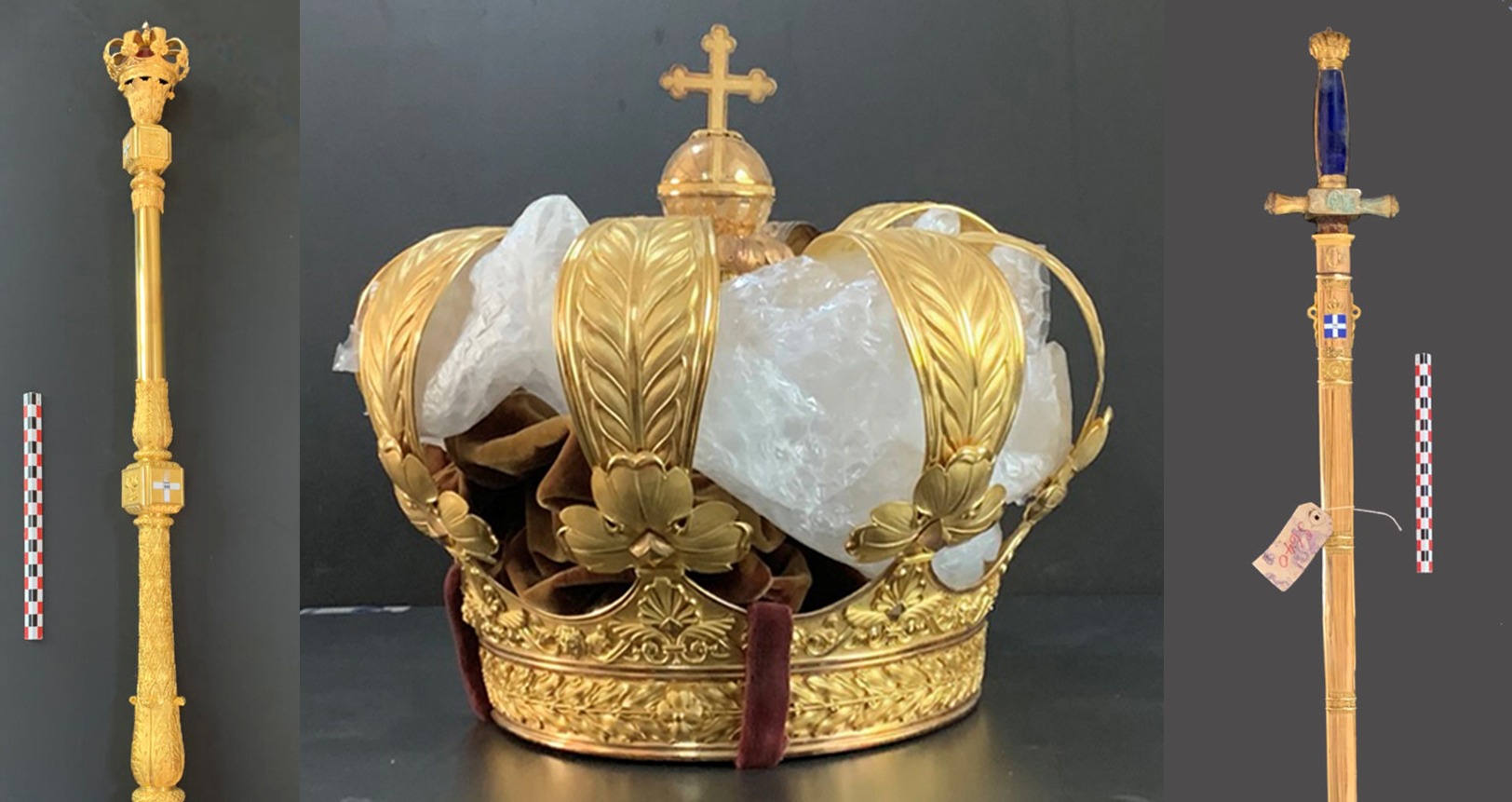
As officials from the Ministry of Culture conducted their documentation of cultural artifacts and movable objects, they uncovered the royal emblems of King Otto of Greece—namely, the crown, scepter, and sword—within the confines of the former summer palace of Tatoi.
From 1832 to 1862, Otto, a member of the Bavarian Wittelsbach dynasty, ruled over Greece as King.
Otto (Greek: Όθων) assumed the throne as the first King of Greece at the age of 17, following the country’s independence from the Ottoman Empire. He held the title of King of Greece from the monarchy’s establishment on May 27, 1832, based on the Convention of London, until his deposition on October 23, 1862.
📌Τα βασιλικά εμβλήματα του Όθωνα βρέθηκαν στο Τατόι
Το στέμμα, το σκήπτρο και το ξίφος, εντοπίστηκαν, στο Τατόι, κατά τη διάρκεια των εργασιών τεκμηρίωσης των πολιτιστικών αγαθών και κινητών αντικειμένων από στελέχη αρμοδίων υπηρεσιών.
🔗https://t.co/JlaU54woTB#MinCultureGR pic.twitter.com/T9N456faTu
— Υπουργείο Πολιτισμού (@cultureGR) July 17, 2023
Historical context
The emblems, which were commissioned by Ludwig of Bavaria in 1835 for his son Otto, were intended to be presented to the young royal upon his coronation in the same year, coinciding with his coming of age. However, due to delays, the ship carrying the emblems did not arrive in Greece in time, and the coronation proceeded without them.
When Otto departed from Greece in 1862, he took the throne’s emblems with him, as he never recognized his expulsion nor formally abdicated. Consequently, the original emblems of the Greek state remained in the possession of the Bavarian royal house since 1862.
The rediscovery of the royal emblems, a subject of much discussion and speculation over the years, revealed that they were remarkably well-preserved, carefully packed, and found in excellent condition.
The royal emblems of King Otto found at Tatoi Palace
Three objects of significance to the former Greek royal family were rediscovered within Tatoi Palace: a crown, a scepter, and a sword.
The crown features a wreath adorned with a floral band resembling a laurel wreath. Positioned on this wreath is an inscription bearing the artist’s signature. Extending from this point are eight arches embellished with ancient acanthus leaves and lion heads, each giving rise to curved stems resembling palm branches.
The entire design converges at the center, forming the epitaph of the crown with a globe placed below a cross. Although the interior retains its purple velvet lining, it exhibits significant signs of wear and tear.
The scepter consists of three elongated stems connected by ornate knobs. On the epitaph of the scepter, there is a crown adorned with a hologlyph, featuring enamel decorations on the inner side. The upper cuboid connection knob showcases alternating decorations, including the monogram of Otto and enamel with a white cross.
At the junction of the antennae, the colors of the Bavarian flag are visible. Following this, there is an undecorated stem, leading to a button adorned with corresponding decorations. Instead of the monogram of Otto, this button depicts full-length facing lions. The central stem is entirely adorned with acanthus floral decorations. The lower stem culminates in a sphere embellished with floral decorations, where the manufacturer’s inscription is engraved.
The sword features an intricately adorned hilt and scabbard, prominently displaying motifs inspired by plants and animals. The handle is crafted from a lazulite stone and terminates in a pommel, where two relief sculptures of female figures are depicted. The decoration extends to the cross formed by the horizontal stems of the thimble. The scabbard bears the raised monogram of Otto on its upper edge, followed by the enamel depiction of the coat of arms of Greece.
On the reverse side, there is a partition that contains the manufacturer’s inscription. The sword is suspended by winding snakes that serve as hanging holes. The entire composition is encircled by a delicate belt adorned with lion heads. Near the base of the scabbard, a female figure—likely Victory—is depicted, surrounded by a palm tree-shaped medal, while war trophies are visible in the background. The lower decorative band on both sides showcases adjectival decorations featuring dolphins entwining tridents.
See all the latest news from Greece and the world at Greekreporter.com. Contact our newsroom to report an update or send your story, photos and videos. Follow GR on Google News and subscribe here to our daily email!



